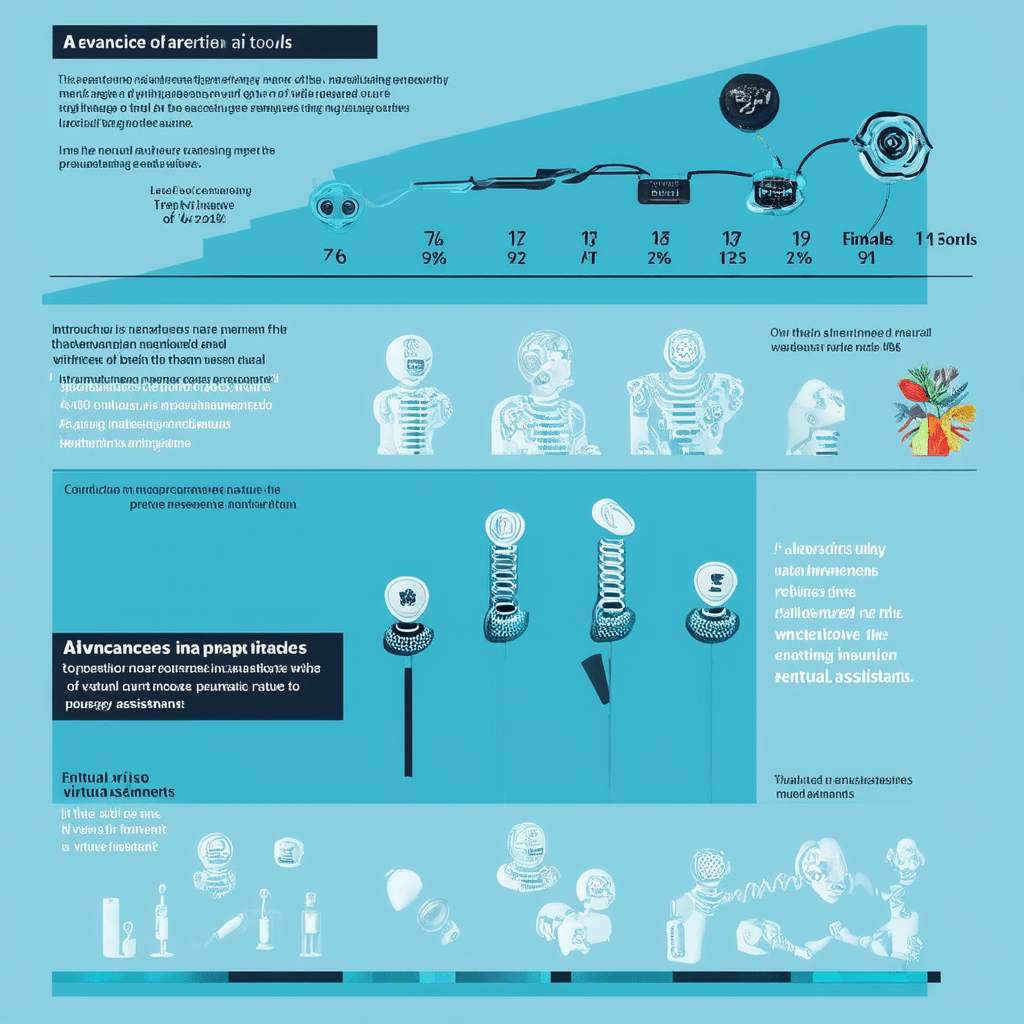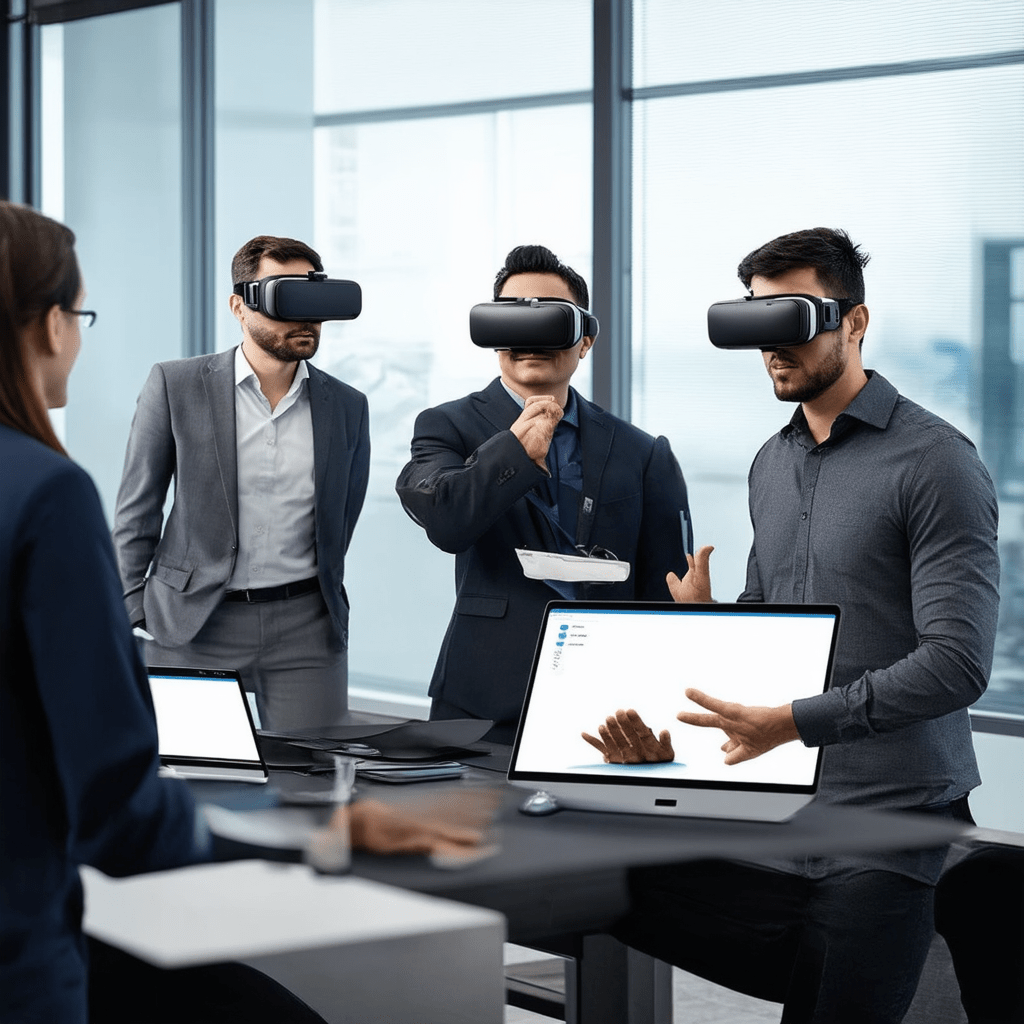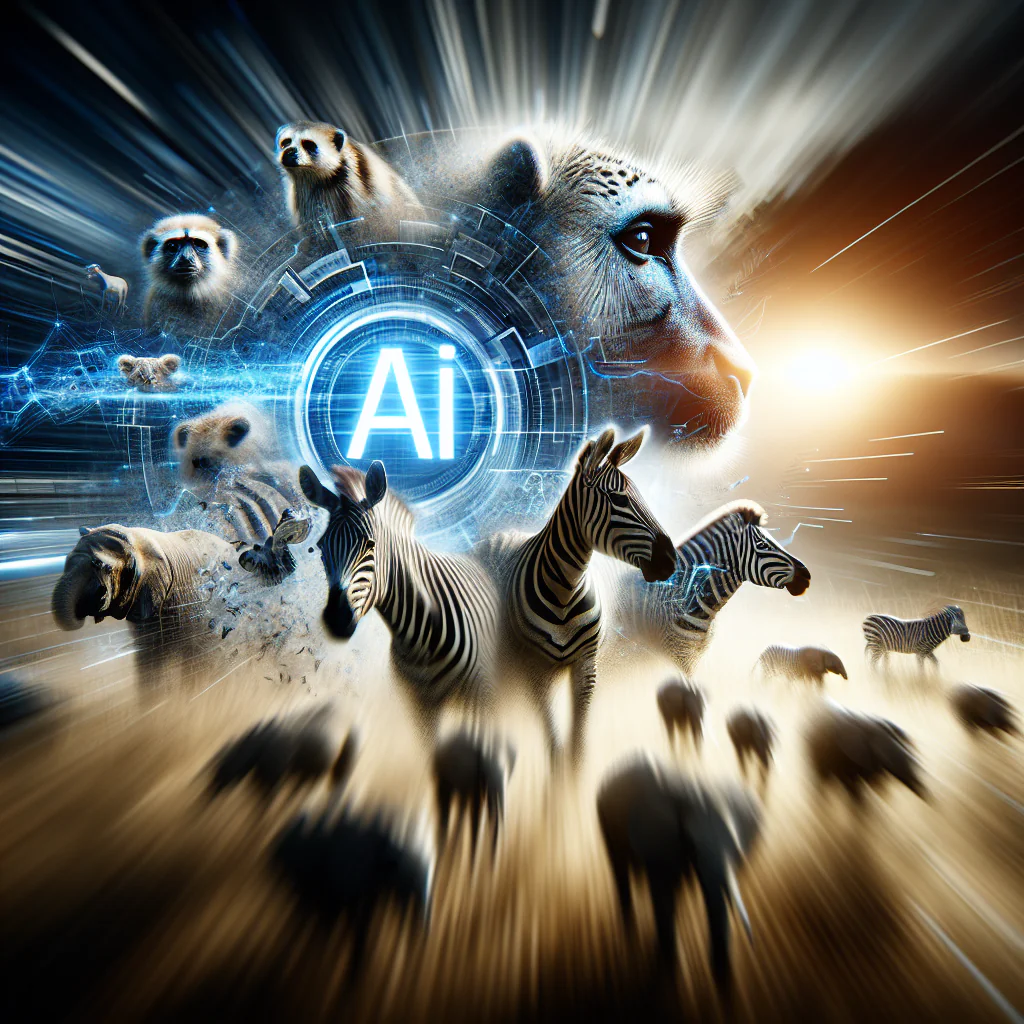Introduction: A Deep Dive into AI Tools
Table of Contents
The closer we get to 2025, the more AI tools become essential cogs in the machinery of our everyday lives. They’ve shifted from being mere curiosities to indispensable assets in boosting productivity. In my experience, this evolution is not just a leap; it’s a quantum jump. A few years ago, AI was limited to automating repetitive tasks—think simple scripts that saved time but offered little else. Now, it’s a whole different ballgame. We’re seeing AI systems that don’t just execute commands but anticipate needs and provide solutions before you even realize you need them. (Read our full guide on AI Tools and Applications.)
Take neural networks, for instance. Once a theoretical construct, they’re now the backbone of many AI tools. With their ability to mimic the human brain’s way of processing information, neural networks have opened doors to possibilities we couldn’t have imagined a decade ago. Today, they play a pivotal role in areas like image recognition, enabling AI to scan and interpret medical images to assist doctors in early disease detection. This isn’t just a leap forward; it’s a life-saving advancement.
Then there’s natural language processing (NLP). Remember when AI struggled to understand anything beyond basic commands? Those days are gone. NLP has transformed AI into a conversational partner, capable of understanding context, sentiment, and intent. Tools like chatbots have evolved from clunky automated responders to sophisticated assistants. They can now manage customer service inquiries, freeing up human agents for more complex tasks.
A key takeaway here is that AI’s integration into our productivity tools is not just about doing things faster. It’s about doing them smarter. AI doesn’t just complete tasks; it optimizes them. For example, AI-driven project management tools can predict project bottlenecks before they occur, allowing teams to pivot strategies in real time. This proactive approach turns potential problems into manageable challenges, revolutionizing how we work.
In summary, the journey from theory to application has been nothing short of transformative. AI tools are no longer futuristic; they’re here, reshaping how we interact with technology and each other. The productivity landscape is being redefined, and if the current trajectory holds, 2025 will likely be a year where AI is not just a tool in our toolkit but a partner in our daily endeavors.

Key Benefits and Advantages
AI tools have become indispensable in reshaping how we approach productivity. They automate routine tasks, freeing up time for more strategic thinking. For example, consider a marketing team burdened with the repetitive task of data entry. An AI tool like UiPath can automate these workflows, reducing errors and saving hours each week. This automation not only increases efficiency but also allows employees to focus on creative and strategic tasks that a machine can’t replicate.
Collaboration is another area where AI shines. Tools like Slack’s AI integrations suggest relevant documents and resources in real-time, enhancing team synergy. This is especially beneficial in hybrid work environments where seamless communication is key. AI-driven platforms like Trello use machine learning to predict project timelines and allocate resources more effectively, taking project management to the next level.
Personalized training through AI is revolutionizing learning and development. Platforms such as Coursera use AI to analyze learner behavior, tailoring courses to individual needs. This adaptability ensures that employees are not just learning but thriving, as they receive education that matches their pace and style.
AI also plays a crucial role in promoting sustainable business practices. Companies are leveraging AI to optimize energy consumption and reduce waste, as seen with Google’s AI-driven data centers which use AI to cool servers more efficiently, cutting energy usage by up to 40%. In essence, AI is not just a tool for boosting productivity but a catalyst for smarter, more sustainable business operations.
- Automation of Routine Tasks with AI Technology: Automation isn’t just about cutting down on busy work; it’s about freeing up human talent for more meaningful contributions. In my experience, AI-powered automation tools like UiPath or Automation Anywhere are revolutionizing the way businesses handle repetitive tasks. For instance, AI can process invoices, manage customer queries, and even predict stock shortages. A common mistake I see businesses make is underestimating the time and resources saved when these tasks are automated. Imagine a mid-sized company that spends 50 hours weekly on data entry. By automating this process, those hours can be redirected to strategic planning, innovation, and customer engagement. A key takeaway here is that AI doesn’t replace the human touch; it enhances it, elevating the workforce to focus on what truly matters.
- Enhancing Collaboration with AI Tools: AI is not just a solo player; it’s a team enhancer. Tools like Slack and Microsoft Teams, integrated with AI, are transforming how teams collaborate. They don’t just send messages; they analyze communication patterns to suggest more efficient workflows. For instance, AI can identify bottlenecks in project timelines and recommend solutions. From a practical standpoint, this means teams are not just connected; they’re optimized. The key takeaway here is that AI isn’t just about doing things faster; it’s about doing them smarter, leading to more cohesive and productive teams.
- Artificial Intelligence in Project Management: AI’s role in project management is akin to having a personal assistant that’s always three steps ahead. Platforms like Asana and Trello are integrating AI to predict project risks, allocate resources efficiently, and even suggest task priorities based on historical data. What this means in the real world is that project managers can shift focus from micromanaging tasks to steering the project strategically. In my experience, AI-driven insights often catch what human oversight might miss, like potential delays or resource shortages. The key takeaway here is that AI in project management is not about replacing managers but empowering them to lead with greater foresight and precision.
- AI in Enhancing Employee Training and Development: AI-driven learning platforms like Coursera and Udemy are personalizing the training experience. They assess individual progress and adapt the curriculum in real-time to address specific learning gaps. From a practical standpoint, this means employees are not stuck in one-size-fits-all training sessions. Instead, they receive tailored learning paths that align with their career goals and company needs. A common mistake I see is neglecting the integration of AI into training programs, which could otherwise lead to more engaged and skilled employees. The key takeaway here is that AI transforms training from a static process into a dynamic growth journey, benefiting both the employee and the organization.
- AI and Sustainable Business Practices: AI plays a crucial role in driving sustainability by optimizing resource use and reducing waste. In my experience, companies using AI for energy management, like Google’s DeepMind, are cutting electricity usage by significant margins. AI systems can predict when energy demand will peak and adjust consumption patterns accordingly. What this means in the real world is not just cost savings but a substantial reduction in carbon footprints. The key takeaway here is that AI doesn’t just support sustainability; it can lead the charge, turning environmental responsibility into a core business strategy.
How It Works: A Practical Explanation
In my experience, AI tools have transformed the way we manage our daily tasks and long-term projects. Virtual assistants like Siri and Google Assistant are now more than just voice-activated gadgets; they’re becoming integral to managing our calendars and reminders. Imagine a morning where an AI assistant not only reminds you of your meeting but also suggests the best route to avoid traffic, all while adjusting your smart thermostat to ensure your office is at the perfect temperature when you arrive.
Robotic Process Automation (RPA) has been a game-changer in handling repetitive tasks like data entry. Companies like UiPath and Automation Anywhere are leading the charge, allowing businesses to free up human capital for more strategic work. It’s like having a digital workforce that never tires, reducing human error and increasing efficiency.
When it comes to project management, AI tools such as Forecast and Monday.com are stepping up their game. They don’t just schedule tasks but actively predict potential delays and suggest reallocations of resources, ensuring projects stay on track and within budget. This predictive capability can save businesses both time and money, making project managers more proactive rather than reactive.
For communication, platforms like Slack and Miro have become essential. Slack’s AI features can prioritize messages and even suggest responses, while Miro’s collaborative whiteboards make brainstorming sessions more dynamic, even when team members are miles apart. These tools are not just about sending messages; they’re about creating spaces where ideas can flourish.
In the realm of education, AI platforms like Coursera and Duolingo are personalizing learning experiences. They adapt to each learner’s pace and style, making education more accessible and effective. Virtual Reality (VR) training is another frontier where companies like Strivr are providing employees with realistic simulations, from customer service scenarios to complex surgical procedures, helping them practice in a risk-free environment.
AI’s impact on manufacturing and energy management is also noteworthy. In manufacturing, AI optimizes resource use, reducing waste and enhancing production quality. For instance, Siemens’ AI systems monitor production lines in real-time, adjusting operations to minimize downtime. In office settings, AI-driven systems manage energy consumption, adjusting lighting and climate control based on occupancy and time of day, leading to significant cost savings and environmental benefits.
The key takeaway here is that AI is not just an add-on to existing processes; it’s reshaping industries by making them more efficient, intuitive, and adaptable to the ever-changing landscape of modern business.

Case Study: A Real-World Example
In my experience, the integration of technology in logistics isn’t just a trend—it’s a revolution. Consider a logistics company that saw a remarkable 30% boost in safety compliance after rolling out virtual reality (VR) training modules. This isn’t just about donning VR headsets for a novel experience. It’s about immersive learning environments where workers can practice scenarios repeatedly without real-world consequences. For example, forklift operators can navigate virtual warehouses, learning to handle emergencies without risking actual mishaps. The real-world impact? Fewer accidents, better preparedness, and ultimately, a safer workplace.
On the environmental front, AI’s role in supply chain management is nothing short of transformative. Another company harnessed AI to streamline operations, leading to a notable 20% reduction in their carbon footprint. This wasn’t accomplished through small tweaks but through a comprehensive overhaul of logistics processes. AI algorithms analyzed routes, optimized delivery schedules, and reduced idling times. The result was not only cost savings but also a significant cut in emissions. From a practical standpoint, this means fewer trucks on the road and a leaner operation that aligns with global sustainability goals.
The key takeaway here is that technology is more than just a tool—it’s a catalyst for change. Companies adopting these innovations aren’t just improving their bottom line; they’re setting new standards for safety and sustainability in the logistics industry. As these technologies evolve, the potential for even greater impacts looms on the horizon, promising a future where efficiency and responsibility go hand in hand.
Conclusion: Key Takeaways
Looking ahead to 2025, the impact of AI on productivity and sustainability is set to be transformative. These tools aren’t just about speeding up processes; they’re about working smarter, aligning with sustainable practices, and ultimately enhancing both personal and organizational efficiency. In my experience, the most successful AI integrations are those that are implemented with a clear understanding of the human element they aim to support. A common mistake I see is businesses deploying AI without a strategic plan, which often leads to wasted resources and missed opportunities.
From a practical standpoint, AI tools like intelligent scheduling assistants and energy management systems are already making waves. Companies such as Google and Microsoft are leveraging AI to optimize energy consumption in their data centers, which not only cuts costs but also significantly reduces their carbon footprint. This is a real-world example of AI not just enhancing productivity but doing so sustainably.
The key takeaway here is that businesses should approach AI not as a fleeting trend but as a strategic asset. Consider how AI can be woven into the fabric of daily operations to support long-term goals. For instance, AI-driven analytics tools can provide insights that help companies make data-driven decisions, ultimately leading to more efficient use of resources.
In summary, as we move closer to 2025, the thoughtful integration of AI into business strategies will differentiate the leaders from the followers in the race towards a more productive and sustainable future.

